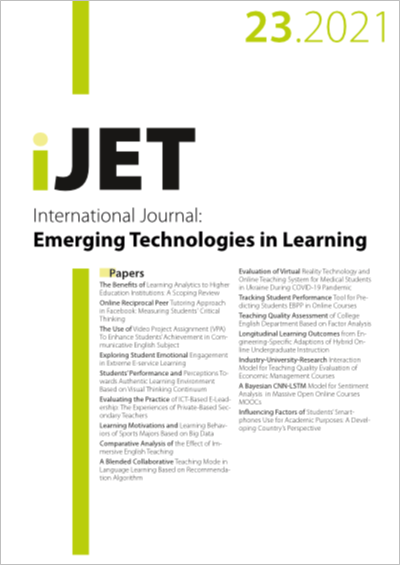The Influence of E-learning Behavior on Students’ Learning Performance of Disaster Emergency Knowledge
DOI:
https://doi.org/10.3991/ijet.v17i01.28475Keywords:
e-learning behavior, students, learning performance, influence, disaster emergency knowledgeAbstract
E-learning has advantages of huge learning resources, enthusiastic learners, friendly interaction and flexible space-time, especially, the large-scale application of many new educational technologies makes e-learning possible. Based on the theory of deconstruction program behavior and task technology fit model, four assumptions of e-learning behavior’s influence on learning performance of students’ disaster emergency knowledge were put forward from two aspects, namely the individual factors (self-efficacy), information literacy and environmental factors (technical characteristics, and promote conditions), the PLS (partial least squares) method was used to carry out regression analysis of affecting factors. Results show that the Cronbach’s ɑ values of the questionnaire are all greater than 0.8, indicating that the measurement indexes have high reliability. AVE (average variance extracted) values of all latent variables are greater than the threshold level of 0.5, showing good aggregation validity. The square root of AVE value is greater than correlation coefficient of each latent variable, and the discrimination validity is good. Information literacy, technical characteristics and facilitation conditions have a positive and significant impact on learning performance of students adopting e-learning of disaster emergency knowledge. The conclusions provide practical suggestions and opinions for enriching the analysis of learning behavior under the e-learning environment, depicting the characteristics of students’ e-learning behavior.
Downloads
Published
How to Cite
Issue
Section
License
Copyright (c) 2021 Yixuan Zou, Laijin Shen, Shabnam Dadparvar

This work is licensed under a Creative Commons Attribution 4.0 International License.



